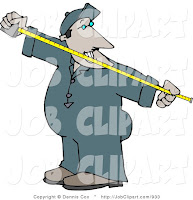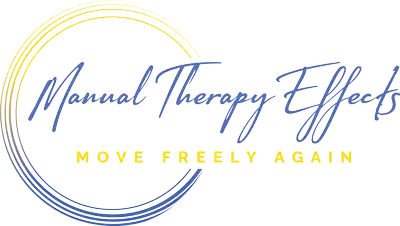with contributions from Chris Richardson, Owner/Master fitter, Bike Doctor of WaldorfThis post is one in a series over the next few weeks detailing bike fitting and saddles from my perspective as an athlete and a physical therapist.

Spring is here and it’s time to dust off the bike or perhaps invest in one, to go and enjoy the wind in your helmet, soak in the beauty of nature and get a little workout in the process. BUT you say, “I don’t like riding my bike because it isn’t comfortable. My seat isn’t comfortable, my hands/wrists hurt, my back, neck, and knees hurt when I do try and ride for more than 10 miles if I even make it that far.”
NEWSFLASH: cycling does not need to CAUSE you pain and discomfort. If it does after trying to ride, then it may very well be your bike fit. If your body still rejects the whole notion especially if pain exists beyond cycling, then maybe you have more going on than what a good bike fit will give you. Consult your friendly physical therapist or doctor (preferably one that understands cycling) for an assessment and maybe even have them collaborate with the fitter to ensure you are fitted properly to your bike. Still don’t think you need to be fit to your bike? Read on.What is bike fitting?
Bike fitting has evolved into a much more complex process than in years past. It’s a science of balancing: comfort, power and aerodynamics (particularly in triathlon or time trial events).There are numerous bike fit methods or disciplines to fit a bike to meet your body’s unique, individual needs. A very experienced fitter will have thousands of fits under his/her belt, and invested into a diverse educational “tool box” of different perspectives/approaches to help attack even the toughest fits. There are high tech tools like dynamic fit bikes, saddle pressure mapping sensors, and motion analysis systems that help “dial in” a rider to their bikes and/or help in determining what bikes may best suit their needs. However, no matter the tools used, a great bike fit should not be dependent upon these high tech tools available to fitters; it is the philosophy and application of their education to fit a rider to their bike. In other words, it’s more about the person doing the work which defines a great fitter not the technology, or in some cases, lack of technology utilized.

A basic bike fit should measure the physical dimensions of the rider. Precise measurements determine the length of a rider’s legs, upper body and arms along with flexibility. The physical assessment, which may include additional steps or data depending on the type of fitting discipline used and how advanced the process is, provides information to the rider and fitter over what sizes and frame geometries work best. This information also helps fitters determine how the rider should be “addressing” the bike. Some riders can sustain a more “leaned over” riding position while others need a more “relaxed” position. The fit provides guidelines for determining what’s best for each rider.Who needs a bike fitting?
Bike fitting is not just for people who race bikes (Pros and elite amateurs alike). Everyone, including the average Joe going for a leisurely weekend ride with the family, or local club riders, looking to ride without pain and discomfort will benefit from a proper fit.
Why get a bike fit?Your bike doesn’t have to be a torture device that you just “get used to”. Technique and ideal biomechanics minimizes DISCOMFORT, INJURY and PAIN. A good bike fit optimizes your biomechanics for efficiency which leads to overall COMFORT. It also optimizes performance for those that need to feed those competitive impulses, if that’s the goal.
The overly simplistic method of stand over height (stand over the top tube of the bike, check the distance between it and your crotch) in determining the correct size of the bike isn’t accurate nor a good method to determine whether you and the bike are a good match. Manufacturers design bikes with varying frame geometries (lengths of top tube and seat tube lengths among them being the main factors). Finding the right “chassis,” or frame size serves as the starting point to build around. It can be a confusing venture, but critical to ensure your overall comfort to enjoy your cycling experience. If a shop sizes you to a bike with the stand over and check crotch clearance method, it is best to turn around and walk out. You need a foundation to build on for maximum comfort and performance. A poor foundation rarely yields optimal results, so you might as well do it right the first time rather than find out the hard way. You deserve to be comfortable, so don’t sell yourself short. Many reputable local shops offer basic bike fits included with the purchase of your new steed. You aren’t only paying for the bike, the fit, and the annual tune up, but for the experience and maybe a lasting relationship with your local shop. Big retail shops rarely have a fitter in house to insure you are getting the bike that actually fits you. Find a shop that has your best interests in mind, finding a bike that meets YOUR needs.
On the flip side, let’s say you have a bike but you either:1) You aren’t happy with your current fit (previously fitted but never really comfy and the fitter rushed you out the door when you were done)
2) You were never fit (bought the bike and did a google fit with the latest bike fit app or you just flat out bought the bike set the seat height to what you thought was ok and off you went)
OR
3) You want more from your fit (decent position, overall comfortable, but is there more I could do? Ie optimize to maximize performance)
Personally, I fall into the last category and maybe a smidge into the first category. As an elite age group triathlete, I want to maximize my potential. The fitter of my (and your) choosing needs to be able to meet the high expectations and needs of the rider, take the time to do a proper fit, and build a rapport. Your bike fit is only as good as the fitter you work with, so your feedback during the session is critical to ensure you are comfortable, so speak up. Google searches for reviews, recommendations from various cycling forums, and word of mouth are great resources to seek bike fitters in your area. Or in my case, fitters who know how to fit triathletes to their bike. If I’m gonna to pay for a service/product, I want my hard earned money to be well spent. I’m willing to pay a little extra for great service and a quality product. The old saying, “you pay for what you get” is true in every sense of the phrase. I have been known to go out of my way, be damned convenience, to have a service done because I want to be treated well and work with the best. So, what’s your comfort, experience, and relationship worth to you?
